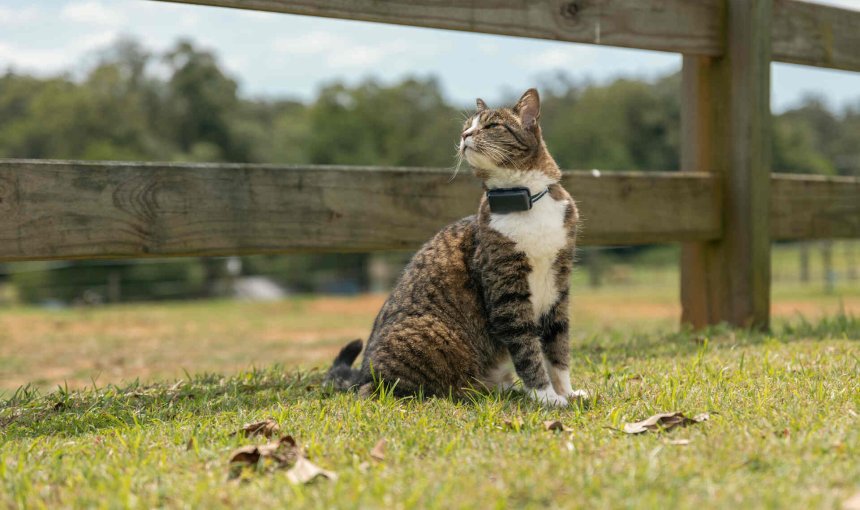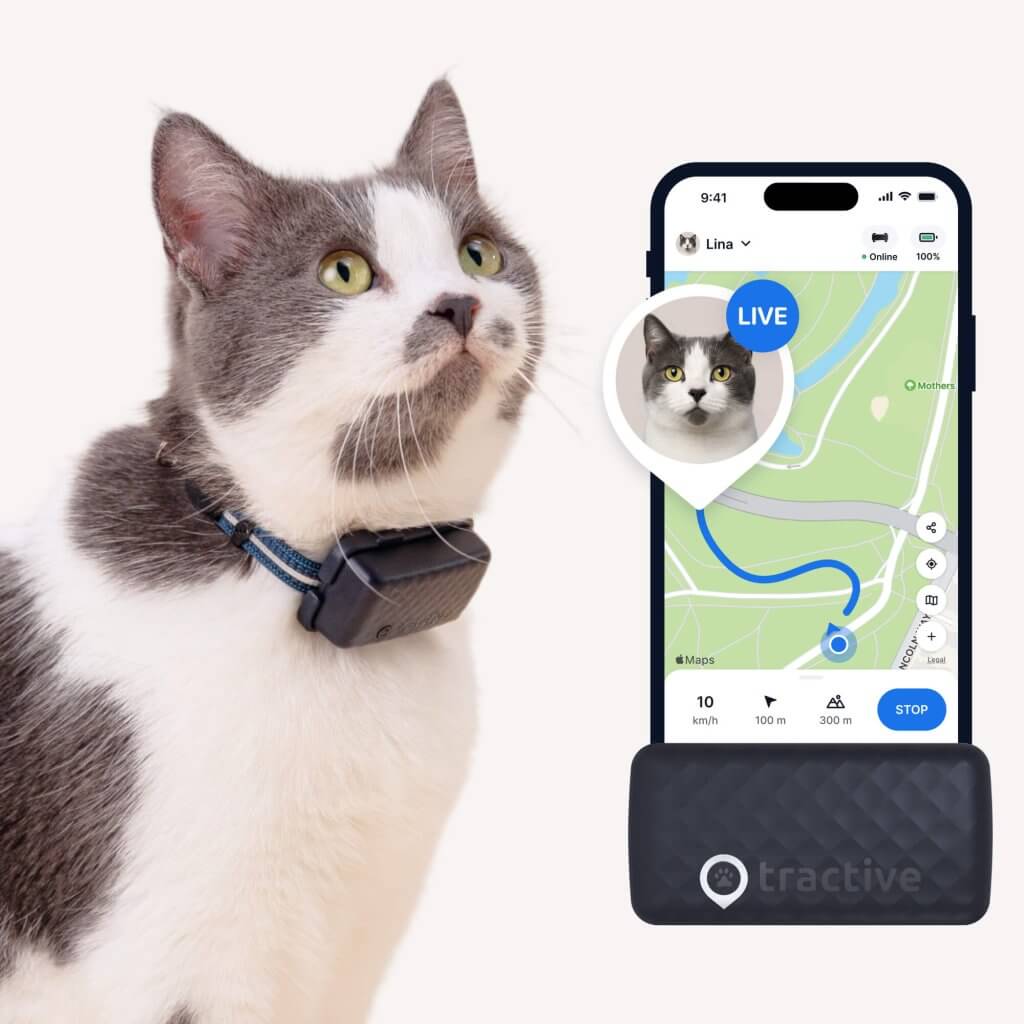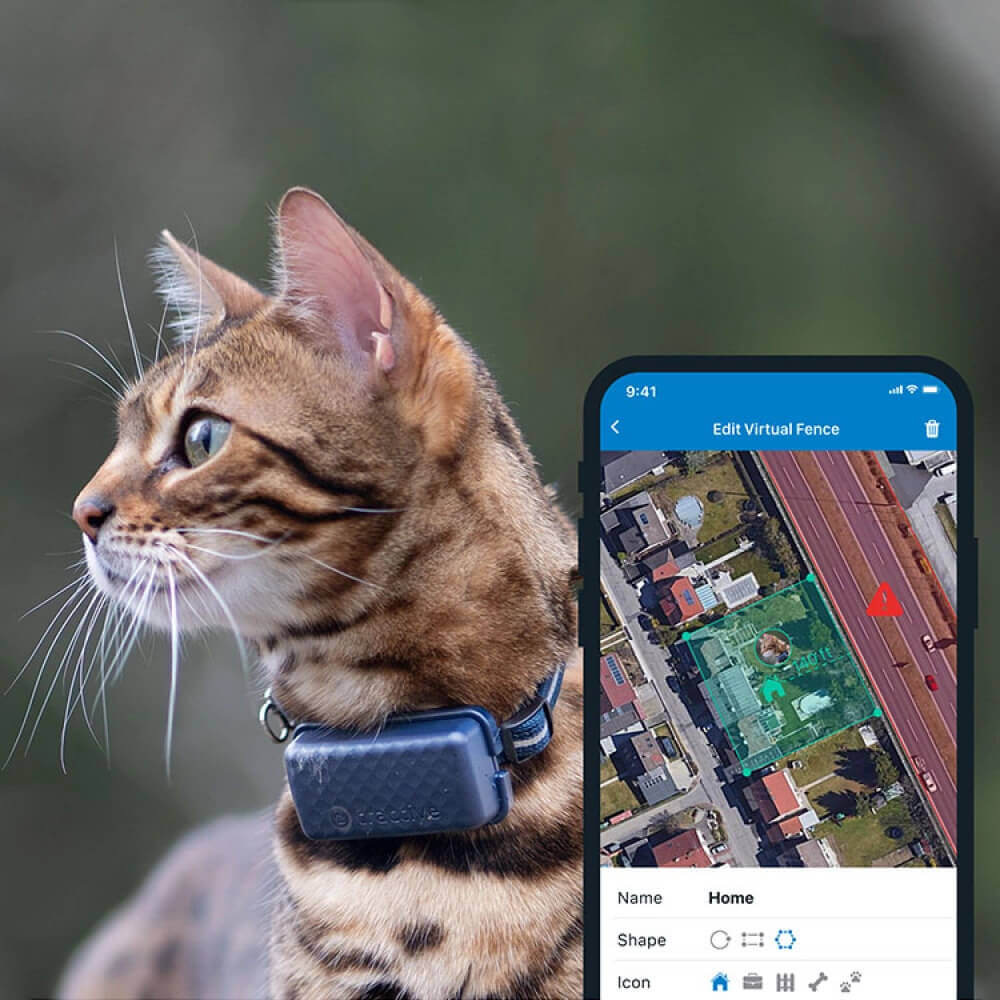8 Cool Cat Fence Options To Keep Your Buddy Safe Inside
Cat fence toppers, DIY kits, vinyl, & even GPS Virtual Fences - here are all your cat fence options covered.

As any cat parent knows, our feline friends can be grade-A escape artists. One moment they’re sunbathing, and the next, they’re scaling a fence like tiny ninjas. That’s where a cat-proof fence or cat fence barrier comes in handy. Here’s how to create a safe outdoor space for your cat while ensuring they stay protected from traffic, predators, and getting lost. (Including Virtual Fences, a cost-friendly option you can carry around with you literally anywhere in the world.)
Key Takeaways
Your cat fence options include…
Eight different types of physical fences and enclosures, including cat fence toppers, catios, and fences made from wood, vinyl, or wire.
Avoid electric or invisible fences
These are only likely to cause your cat stress, anxiety, or even potential injury.
Keep your cat occupied
This can reduce their desire to escape, especially if they’re engaged in the yard with climbing perches, toys, and fresh water.
Try a Virtual Fence as a humane, cost-effective alternative
The Tractive GPS Virtual Fence is a portable alternative to a physical fence that also won’t compromise your cat’s love and trust in you. From the Tractive mobile app, you can set up a safe zone and receive escape alerts if your cat leaves the area, besides real-time tracking.

Find out where your cat spends their time.
Read moreChoose the right cat fence setup
A good cat fence should prevent jumping, climbing, and squeezing through gaps. Here are some options to consider:
1) Cat fence toppers
If you already have a fence, you can add an outward-facing extension (also called a cat fence barrier) to prevent jumping. These are often curved inwards or use rollers that make it hard for cats to grip and climb over.
2) Fully enclosed cat fence
Some pet parents opt for a dedicated cat-proof fence that surrounds the entire yard. These are usually made with sturdy mesh or netting that extends overhead to keep cats contained.
3) DIY cat enclosures
If you’re handy with tools, you can build a “catio” or a screened-in outdoor space attached to your home where your cat can safely enjoy the outdoors. Or, in the colder months, a heated outdoor cat home to keep them safe.
4) Wood fences
Wooden fences can be a sturdy and aesthetically pleasing option. However, they need to be tall and smooth enough to prevent cats from climbing. Adding cat-proof extensions on top can further enhance security.
5) Vinyl fences
Similar to wood, vinyl fences offer a sleek and durable option that is harder for cats to climb due to their smooth surface. Just be careful if your cat chews off any part of it. (Since vinyl can be toxic to them.)
6) Masonry fences
Brick or concrete walls can be great barriers, but they should be tall enough to prevent your cat from leaping over them. Adding a cat-proof topper can make them even more secure.
7) Wire or chain-link fences
While these fences are easy to install, they require extra add-ons like cat-proof mesh or angled extensions to prevent cats from climbing up and over.
Consider the cost of your cat fence
Here’s a breakdown of the average costs for different types of cat fences, both for DIY installation and professional installation:
| Fence Type | DIY | Professional installation |
|---|---|---|
| Cat fence toppers | $100 – $500 | $500 – $1,500 |
| Fully enclosed cat fence | $300 – $1,500 | $1,500 – $5,000+ |
| DIY cat enclosures | $200 – $1,000 | $1,500 – $4,000 |
| Wood fences | $1,000 – $3,000 | $3,000 – $7,000 |
| Vinyl fences | $2,000 – $5,000 | $4,000 – $10,000 |
| Masonry fences | $3,000 – $8,000 | $8,000 – $20,000+ |
| Wire or chain-link fences | $500 – $2,000 | $2,000 – $5,000 |
A cat fence DIY kit can also be a hassle-free way to secure your backyard. These kits come with pre-measured fencing materials, connectors, and installation guides, making setup easier. They also allow you to adapt the fence to your yard’s layout. Plus, most are easy to assemble by yourself (so no need for professional help.)
Just keep in mind that even a cat fence DIY kit includes a one-time purchases ranging anywhere between $35-$3,300, depending on how extensive a setup you’re looking for.
💡A GPS Virtual Fence on the other hand? A one-time cost of $40-$50 (€39-€49), plus a monthly subscription charged less than your Netflix account. Plus, you can set it up from the comfort of your couch and carry it around with you wherever you go.

Track your cat wherever they go
Get real-time location information, wherever they go. Find out when they go somewhere they shouldn’t, with Virtual Fences. And discover their favorite spots with Territory.
Secure the base of the fence
Cats aren’t just great jumpers — they’re excellent diggers, too! To prevent escapes:
- Bury part of the fence into the ground
Dig at least 6-12 inches down and secure the bottom of the fence underground. This helps prevent your cat from tunneling out and also deters other animals from digging in. - Add a barrier along the base
Materials like bricks, concrete edging, or chicken wire can act as an extra layer of security. If you’re using wire mesh, angle it outward underground to further discourage digging. - Install an L-Footer or wire apron
A wire mesh apron that extends outwards at the bottom of the fence can prevent your cat from digging underneath. This should be buried or secured with ground stakes. - Check for gaps and weak spots regularly
Inspect your fence periodically to ensure there aren’t any loose sections, broken panels, or gaps where a determined cat could slip through. - Be smart about your landscaping
Planting dense shrubs or placing large rocks along the perimeter can help block potential escape routes and make it harder for cats to access digging spots. - Install tree guards
If you have trees near the fence, use tree guards or wraps to prevent your cat from climbing and using them as an escape route. - Add overhead flexible netting
Attaching a flexible netting system at an inward angle along the top of the fence can provide additional protection against climbing escapes.
Here’s a summary of your average cost estimates:
| Measure | DIY | Professional installation |
| Burying part of the fence | $100 – $500 | $500 – $2,000 |
| Adding a barrier along the base | $50 – $300 | $300 – $1,500 |
| Installing an L-Footer or wire apron | $75 – $500 | $500 – $2,500 |
| Checking for gaps and weak spots | Free | $50 – $500 |
| Landscaping for security | $100 – $1,500 | Varies widely depending on choices |
| Installing tree guards | $50 – $200 | $200 – $1,000 |
| Adding overhead flexible netting | $150 – $600 | $600 – $2,500 |
Avoid electric or invisible fences
Some cat parents consider electric fences or invisible fences that use static shocks as a deterrent. However, these can cause unnecessary stress and harm to your pet. A shock doesn’t teach a cat to stay inside a boundary — it only creates fear and anxiety. All it’s bound to do is:
- Majorly stress out your cat
Cats may associate the shock with their environment, making them fearful or anxious in their own yard. Some cats may ignore the shock in pursuit of prey or curiosity, leading to repeated stress and confusion. - Risk malfunctioning
Batteries can die, signals can be interrupted, and some cats may learn to tolerate the shock. Which, with time, can make the whole system ineffective. - Possibly injure your cat
Repeated shocks may cause burns, skin irritation, or heightened aggression in sensitive cats.
Both vets and animal rights activists strongly discourage the use of electric and invisible fences for cats. You’re always better off choosing a humane containment method that doesn’t compromise your cat’s health, safety, well-being, or love and trust in you.
Keep your cat engaged in the yard
Even with the best cat-proof fence, some adventurous felines will still try to escape. The key? Make their space more exciting than what’s beyond the fence.
- Add climbing perches, scratching posts, or outdoor cat trees to keep your cat occupied in your yard.
- Create shady spots and cozy hideaways. (Perfect for sunny days outdoors.)
- Make sure your cat has plenty of fresh water to drink throughout the day.
- Get your cat spayed or neutered, if they aren’t already. This can help prevent any roaming behavior, especially once your girl cat goes into heat.
- Use toys that resemble “prey” animals, like feather wands or remote-controlled mice. This can keep their hunting instincts happy and prevent your cat from venturing outdoors in search of prey.
Even with the best fence or virtual safety system, it’s always a good idea to keep an eye on your cat while they’re outside. This ensures they stay safe, happy, and healthy while enjoying their backyard adventures.
Try a GPS Virtual Fence for extra peace of mind
If setting up a physical cat fence isn’t within your budget, or if you can’t modify your yard, a GPS Virtual Fence (like Tractive) is a fantastic, cost-effective alternative.

Here’s why it’s a great option:
- A 5-minute setup time
No need for expensive installations; just set up a virtual safe zone from your Tractive mobile app around your home or backyard. Now the minute your cat tries sneaking past it, your tracker sends you an escape alert to your phone, so you can intervene. - Track your cat even while traveling
Going on vacation? You can set up a virtual fence wherever you go from your device, whether you’re camping, visiting friends, or exploring new places with your cat. If you’re on a Premium subscription, your Tractive device works in 175 countries around the world.
- Real-time tracking
If your cat does manage to sneak out, just hit “LIVE” on your Tractive device – and track their movements in real-time. So that no matter how near or far your cat is, you can always find them. - An investment that won’t burn a hole in your wallet
At the time of writing this post, Tractive CAT Mini trackers pricing ranges from $40-$50 (€39-€49) – plus an ongoing monthly subscription ranging from $5-$13 per month, depending on your plan.
Not too bad, if you compare it to setting up a physical fence, if you ask us.
Ready to set up a cat-friendly backyard?
Keeping your cat safely contained doesn’t have to be complicated or stressful. With the right cat fence, you can give your cat the outdoor time they crave while keeping them safe. Whether you opt for a secure physical barrier or a portable virtual fence, you’ll have the peace of mind knowing your buddy won’t be wandering too far from home.
And if you’ve liked this post, share it with a fellow DIY enthusiast or cat lover – and let’s help build a safer, kinder world for our furry friends together.



